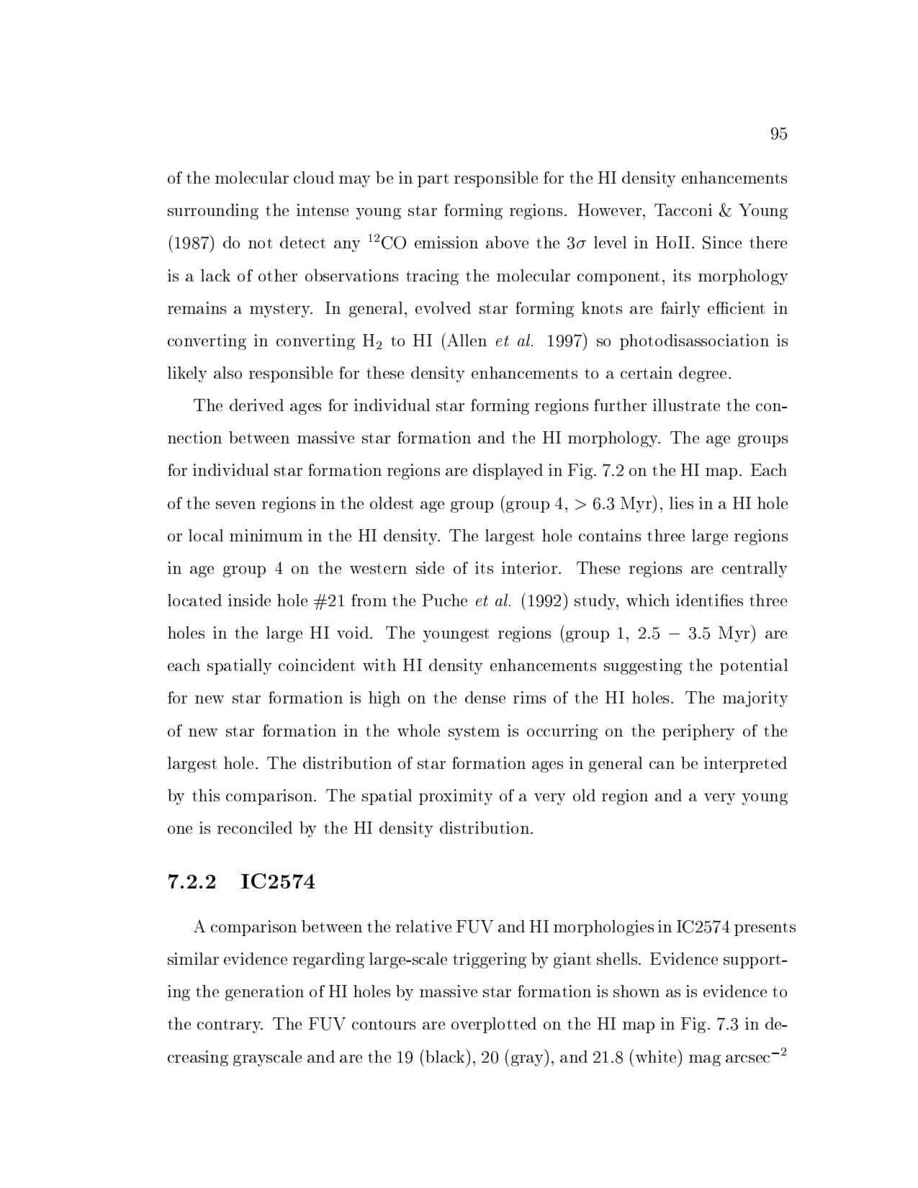
95
of the molecular cloud may be in part responsible for the HI density enhancements
surrounding the intense young star forming regions. However, Tacconi & Young
1987 do not detect any
12
CO emission above the 3 level in HoII. Since there
is a lack of other observations tracing the molecular component, its morphology
remains a mystery. In general, evolved star forming knots are fairly e cient in
converting in converting H
2
to HI Allen
et
al.
1997 so photodisassociation is
likely also responsible for these density enhancements to a certain degree.
The derived ages for individual star forming regions further illustrate the con-
nection between massive star formation and the HI morphology. The age groups
for individual star formation regions are displayed in Fig. 7.2 on the HI map. Each
of the seven regions in the oldest age group group 4, 6
:
3 Myr, lies in a HI hole
or local minimum in the HI density. The largest hole contains three large regions
in age group 4 on the western side of its interior. These regions are centrally
located inside hole 21 from the Puche
et
al.
1992 study, which identi es three
holes in the large HI void. The youngest regions group 1, 2.5
,
3.5 Myr are
each spatially coincident with HI density enhancements suggesting the potential
for new star formation is high on the dense rims of the HI holes. The majority
of new star formation in the whole system is occurring on the periphery of the
largest hole. The distribution of star formation ages in general can be interpreted
by this comparison. The spatial proximity of a very old region and a very young
one is reconciled by the HI density distribution.
7.2.2 IC2574
A comparison between the relative FUV and HI morphologies in IC2574 presents
similar evidence regarding large-scale triggering by giant shells. Evidence support-
ing the generation of HI holes by massive star formation is shown as is evidence to
the contrary. The FUV contours are overplotted on the HI map in Fig. 7.3 in de-
creasing grayscale and are the 19 black, 20 gray, and 21.8 white mag arcsec
,
2
